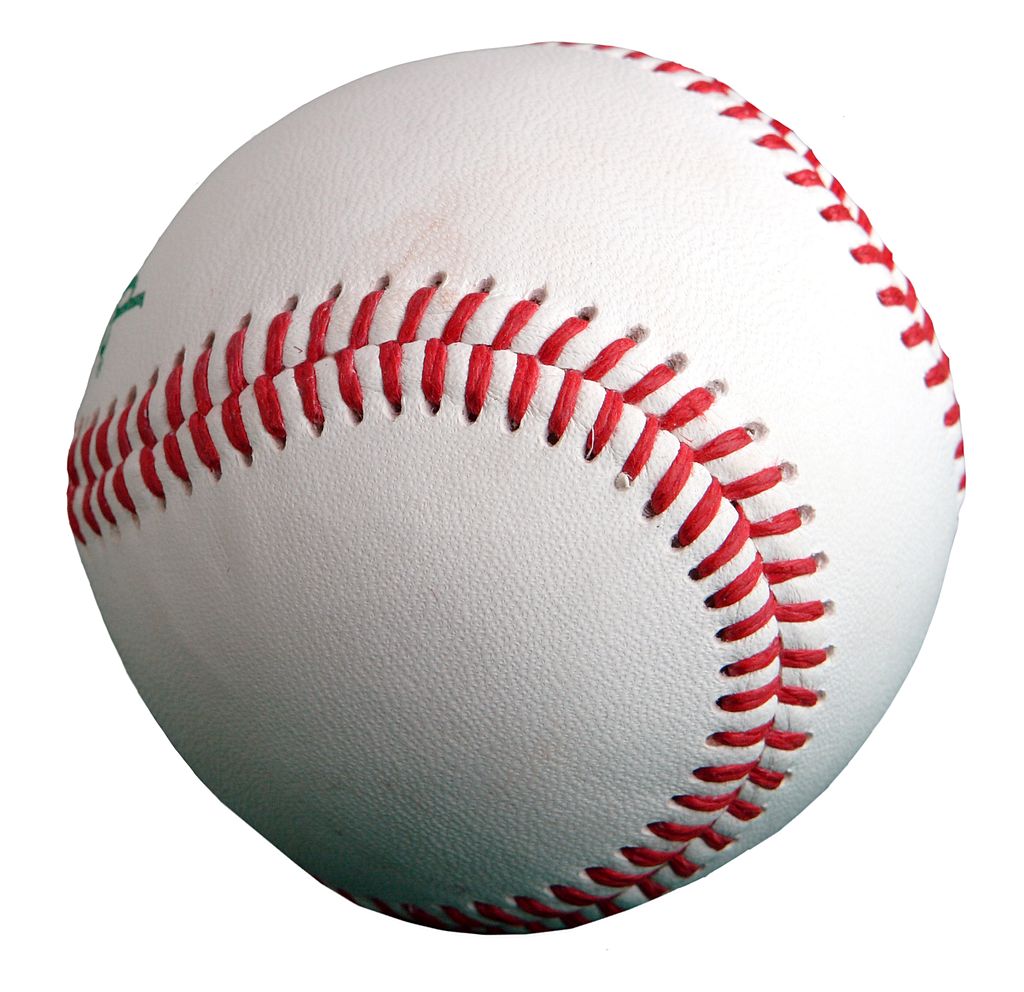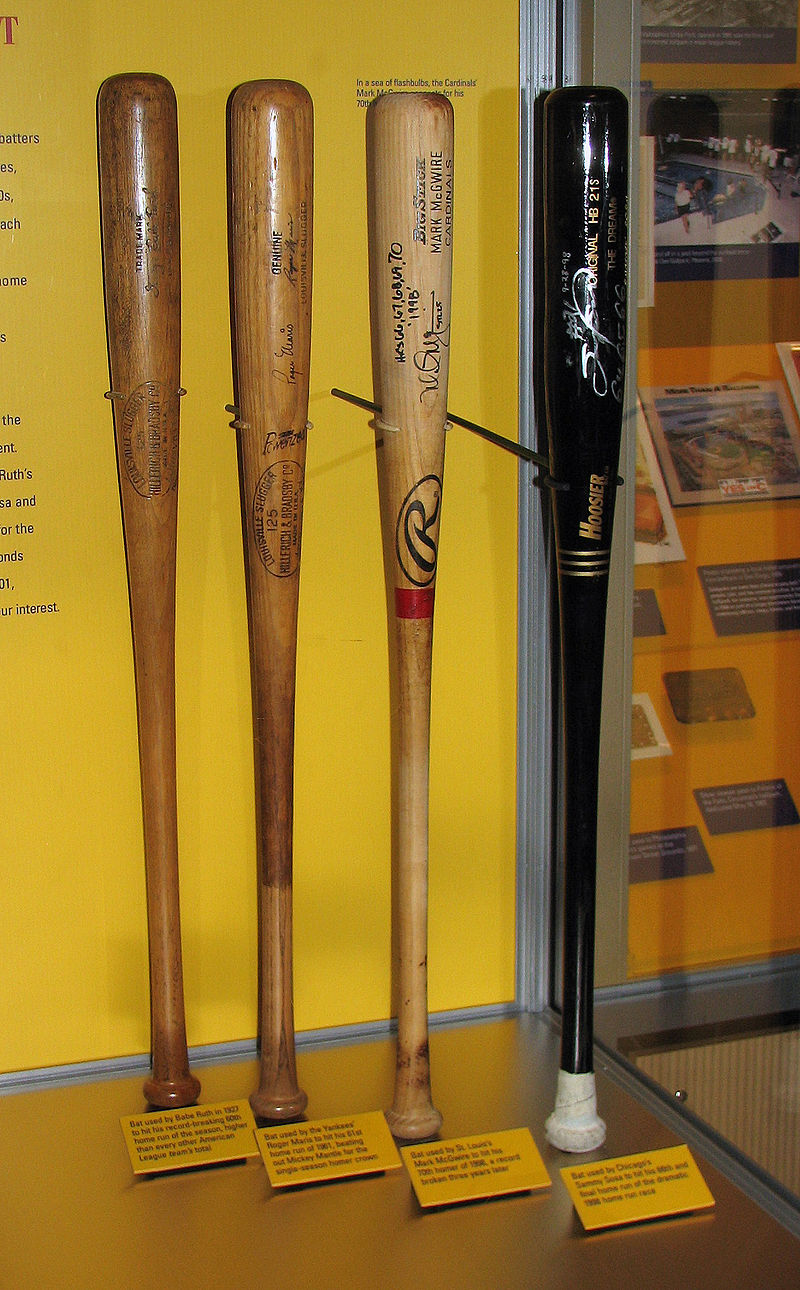Equipment of the Game
All baseballs have the same characteristics. They contain a rubber core, which is wrapped in yarn/string. This yarn can measure up to a mile long. The combination of the rubber core and yarn are covered in two strips of white horse or cowhide that is stitched together with a signature red thread.
This red thread is not just for decoration. The stitching acts like wings on an airplane, and depending on the way a pitcher throws the ball, it can cause the trajectory of the ball to change.
Baseball Dimensions:
- Circumference - 9 to 9.25 inches.
- Diameter - 2.86 to 2.94 inches.
- Weight - 5.00 to 5.25 ounces.

Source: Baseball | Wikipedia
Baseball bats are typically either made of wood or metal. The most popular wooden bats are made from ash, birch or maple, while metal alloy bats are made from aluminum.
Anatomy of a Baseball Bat:
- Barrel - the thickest part of the bat; best part for hitting the ball
- Cap - the end of the barrel, sometimes called the end cap
- Handle - the thinnest part of the bat
- Grip - refers to the rubber or tape wrapped around the handle
- Knob - the wide piece at the end of the handle that prevents the bat from slipping from the player’s hand
A player chooses a bat based on their height and weight, and baseball bats must be:
- No more than 2.75 inches in diameter
- No more than 42 inches in length
- Weight range must be between 33 and 36 ounces
A baseball glove or mitt is used by baseball players on the defending team to help field balls hit by batters. The type of leather glove used is based on the player’s position:
- Catcher’s Mitt - lack individual fingers and extra padding to catch a thrown pitch
- First Baseman’s Mitt - lack individual fingers with a very long and wide to help them pick or scoop badly thrown balls from infielders
- Infielders’ Glove - smaller than a first baseman’s mitt and have shallow pockets to allow fielders to remove the ball easily to make a quick throw
- Pitchers’ Glove - have a closed webbing to allow pitchers to conceal their grip on the ball
- Outfielder’s Glove - deep pockets to help with catching fly balls and to keep outfielders from having to bend down to retrieve ground balls
Dew occurs when moisture condenses out of the air and deposits itself on objects. Dew along poses no threat to aircraft unless the dew freezes and becomes frost, which inhibits lift.
Fog is a cloud that begins within 50 ft of the surface. It typically occurs when the temperature of the air near the ground cools to the dewpoint temperature. Fog can cause problems with ground visibility. (Sky Video of Fog from FSU WeatherSTEM on Feb 3, 2017)

Source: Fir0002 via Wikimedia Commons

